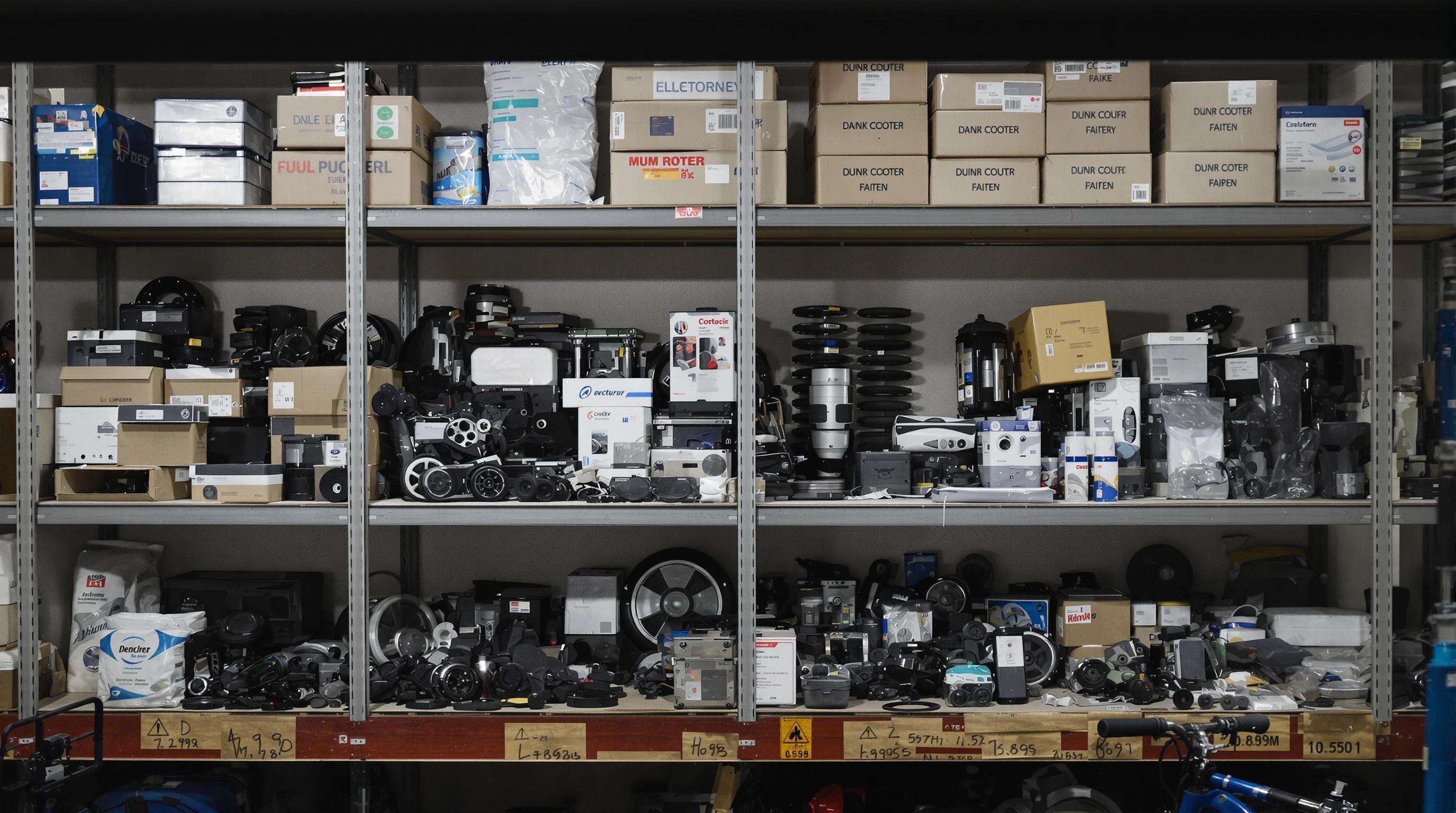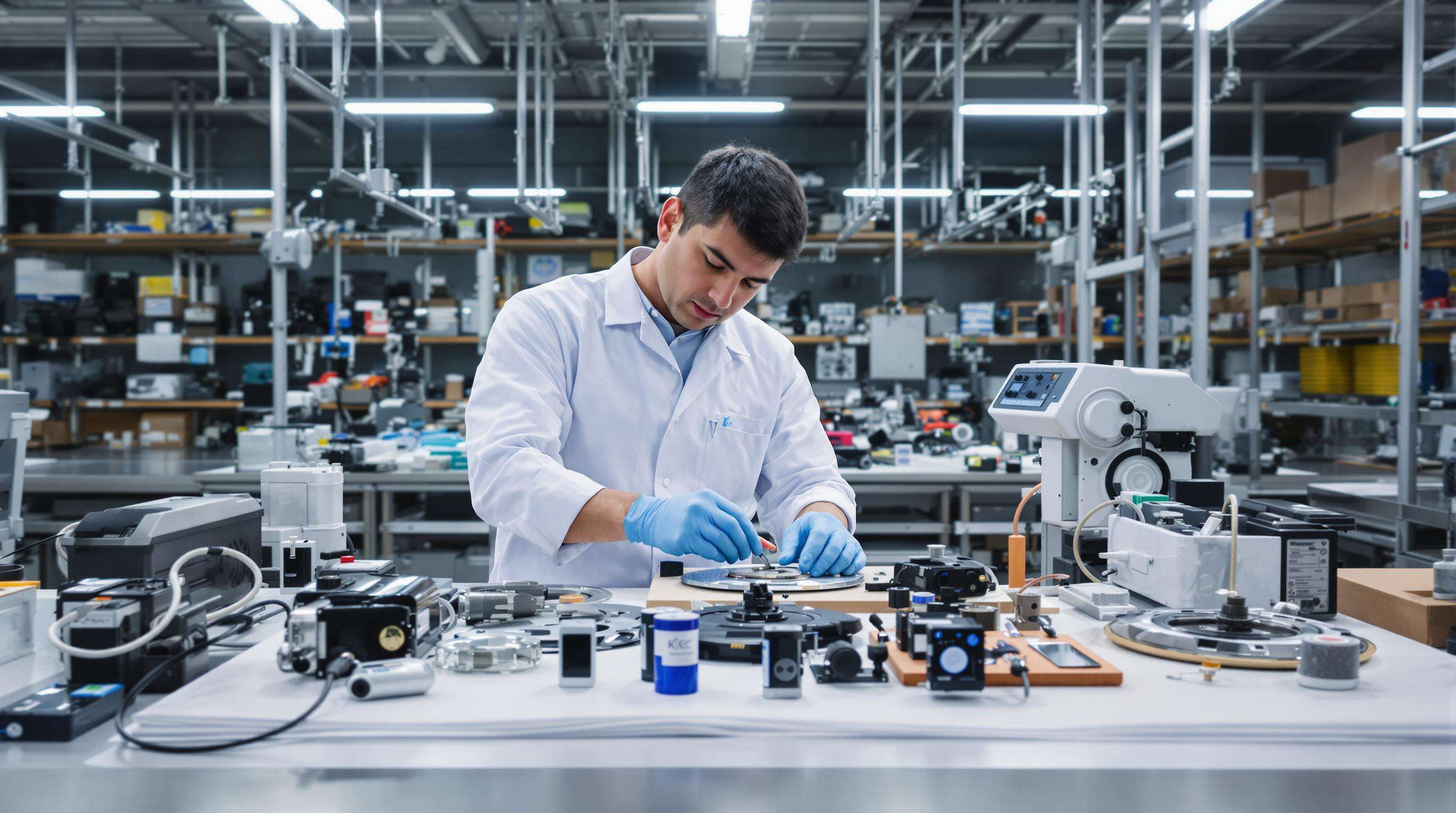
The changing way people move around European cities has really boosted the electric kick scooter market, which Allied Market Research predicts will hit $4.5 billion by 2028. This growth means there's been a big jump in need for spare parts too. Looking at the numbers from Urban Mobility Observatory in 2023, we see over 12 million shared e-scooters scattered throughout EU cities. For companies running these fleets, maintenance costs are becoming a major expense. They typically end up spending between 18 to 25 percent each year just replacing parts they originally paid for when buying the scooters. Certain parts wear out faster than others. Batteries usually last somewhere between 500 to 800 charges before needing replacement, while brake pads generally need to be swapped out after about 1,200 kilometers of use. These regular replacements have led to a steady increase in bulk spare part orders, with businesses ordering 14% more each year since 2021 according to industry data.
Three key trends are shaping procurement strategies:
EU e-mobility regulations require 97.2% of imported spare parts to comply with EN 17128:2020 mechanical safety standards. Key requirements include:
| Compliance Aspect | Requirement | Testing Frequency |
|---|---|---|
| Battery Safety | UN38.3 certification + 1,000-cycle stress tests | Batch-level (2024 Revision) |
| Brake Systems | IP54 water resistance + 20,000-stop durability | Annual recertification |
| Structural Parts | Anodized aluminum (3mm minimum thickness) | First article inspection |
These standards have reduced non-compliant parts in the EU market by 31% since 2022, though certified components now face 8–12 additional days in lead time due to stricter testing protocols.
China produces 68% of global micromobility components, with its electric scooter spare parts sector valued at $9.2 billion in 2023 (IMARC Group). This dominance stems from three core advantages:
| Factor | China’s Capability | Market Impact |
|---|---|---|
| Manufacturing scale | 550+ specialized component factories | 45% faster bulk order fulfillment |
| Material ecosystems | Integrated battery and motor supply chains | 20–30% lower costs vs. regional suppliers |
| R&D investment | $1.4B annual investment in micromobility tech | 6–8 month faster product iteration cycles |
Industrial clusters in Shenzhen support monthly production runs exceeding 50,000 units for common parts like brake calipers and throttle controllers, with per-unit costs 40% below EU equivalents. However, minimum order quantities (MOQs) typically start at 500 units, requiring distributors to balance volume commitments with inventory risk.
Leading manufacturers rely on tiered supplier networks:
Annual audits by third parties like SGS have reduced defect rates in critical components by 32% (SGS 2023 Compliance Report).
Pre-shipment inspections identify 78% of electrical system flaws before export. However, hidden risks—such as inconsistent material sourcing or undocumented design changes—can still impact long-term reliability, emphasizing the need for ongoing quality oversight.
EU distributors face a strategic choice: 63% favor just-in-time inventory to reduce warehousing costs, while 37% maintain safety stock for high-turnover items like batteries and brake pads (Logistics Europe 2024). While just-in-time minimizes capital lock-up, it demands accurate forecasting. Safety stock remains essential for time-sensitive repairs, especially when sourcing from suppliers with extended lead times.
Top distributors mitigate risk by sourcing key components from at least two verified manufacturers, cutting component shortages by 58% compared to single-supplier models. Supplier audits evaluating production capacity (minimum 20,000 units/month) and defect rates (<0.8%) have become standard since 2023. Companies with mapped alternative logistics routes recover from port disruptions 72% faster, according to a 2025 logistics study.
A Hamburg-based mobility provider serving a 15,000-scooter fleet adopted a hybrid inventory model—maintaining safety stock for motors and controllers while using just-in-time ordering for low-risk parts. This reduced average repair wait times from 14 to 8.5 days. Partnering with a bonded warehouse in Rotterdam slashed customs delays by 65%, proving the value of regional distribution hubs in enhancing responsiveness.
When time is of the essence for things like motors or batteries, most companies still go with air freight since it gets stuff delivered within 24 to 72 hours flat. For those non-urgent components like plastic casings though, shipping by sea makes more sense because it cuts costs dramatically. There's also this rail and road combo that works pretty well for certain goods. Brake pads and tires coming out of China reach EU storage facilities in around 18 to 22 days using this mixed transport approach. And according to recent numbers from last year, this method actually saves about 35 percent compared to flying everything in. Makes sense when looking at bottom line savings while still getting products where they need to go.
Distributors using bonded warehouses near Hamburg and Rotterdam reduce customs clearance delays by 72%. Storing pre-certified spare parts in these customs-approved zones allows same-day release upon order, ensuring compliance with strict service-level agreements for fleet repairs.
A Barcelona-based operator achieved 12-hour delivery across Spain and France by decentralizing inventory across three regional hubs. Localized stock of throttles, controllers, and displays serves 90% of demand while reducing storage costs by 30% compared to centralized warehousing.
Final assembly for wiring harnesses and brake systems is increasingly shifting to tech hubs in Poland and Romania. With average labor costs at €9.80/hour (Eurostat 2024), this nearshoring model cuts delivery cycles by 17 days compared to full shipments from China, offering a scalable solution for mid-volume production.

All spare parts entering the EU must carry the CE mark, confirming compliance with health, safety, and environmental regulations. RoHS certification restricts hazardous substances such as lead and mercury. To meet rising safety expectations, leading manufacturers are adopting military-grade electronic assembly standards like IPC-A-610.
High-risk components undergo rigorous third-party testing:
| Component | Key Tests | Compliance Threshold |
|---|---|---|
| Batteries | Overcharge protection, thermal runaway | UN38.3 certification |
| Motors | Water ingress, heat dissipation | IP54 rating minimum |
| Brakes | Emergency stopping distance | EN 14619:2019 standard |
When consistently applied, these protocols prevent 92% of safety incidents in active fleets (Micro-Mobility Safety Initiative 2023).
Importers using dual inspection checkpoints achieve superior quality outcomes:
This layered approach reduces defective deliveries by 67% compared to single-stage inspections, while bonded warehousing streamlines customs for urgent replacements.
With the rising adoption of electric scooters in European cities, the need for maintenance and replacement of worn-out components has increased, leading to more bulk orders for spare parts.
EU regulations require that imported spare parts comply with strict mechanical safety standards such as EN 17128:2020, affecting testing protocols and lead times.
Chinese manufacturers provide cost-efficient solutions due to their large-scale production capabilities, integrated supply chains, and continual R&D investment, making them leaders in global micromobility component production.
Distributors often utilize a mix of just-in-time inventory strategies to reduce warehousing costs and maintain safety stock for high-turnover items, ensuring quick availability for urgent repairs.
Strategies include dual inspection checkpoints at origin and upon EU arrival, pre-shipment inspections, and adherence to rigorous certification standards to ensure compliance and reduce defective deliveries.
 Hot News
Hot News
© Copyright 2024 Shenzhen New Image technology Co., Ltd All Rights Reserved Privacy policy